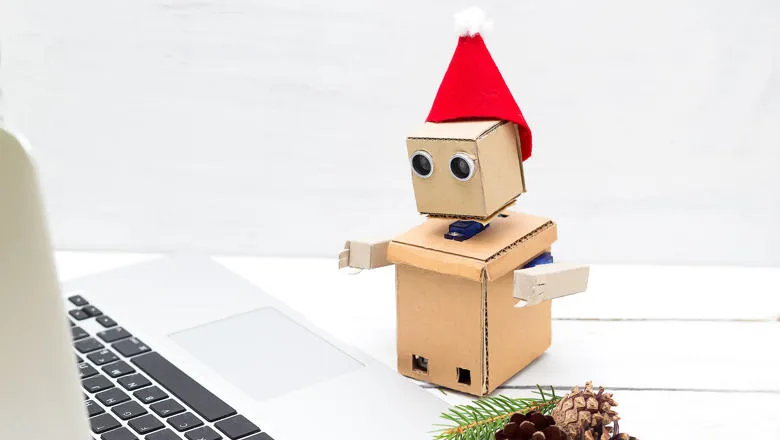20 December 2016
NMS Christmas Lectures 2016
On Tuesday 6 December, school students congregated in the Great Hall at King’s College London, wearing Santa hats to listen to lectures given by five prominent academics from the Faculty of Natural & Mathematical Sciences. Speaking about their own scientific research, each academic brought to light the outstanding work currently underway at King’s with a festive theme while tying their presentation to a holiday theme

The first to speak was Professor Kawal Rhode from the Department of Biomedical Engineering, who spoke on the development of self-sufficient robots in a presentation titled “Should We Have a Robotic Santa?” He discussed the motor differences between humans and robots, explaining that robots are equipped to carry out accurate surgical and medical procedures because they are capable of making extremely precise and refined movements. He concluded that scientists are moving towards developing self-sufficient robots to make healthcare more efficient.
Professor Andre Cobb from the Department of Chemistry began his lecture on organic chemistry with a surprising fact, that European mistletoe is toxic, and was even used in ancient civilisations as an infertility elixir. He then went on to discuss the work his lab currently does with regards to synthesising Theobromine – an alkaloid that can be found in chocolate and holly berries.
The third speaker was Professor Rita Borgo from the Department of Informatics, who began her presentation by comparing the Christmas story of the three wise men who embarked on a journey to follow a bright star to the journey that scientists went through to track the comet, 67P/Churyumov–Gerasimenko. Rita discussed how we can use computer simulations to build entire solar systems and chase theoretical comets through space.
The fourth speaker was Dr Tony Hill from the Department of Mathematics, who talked about the mathematics of snowflakes and explained how a snowflake is an example of a fractal. Dr Hill delved into the topics of the Cantor set, the Koch Snowflake and the Sierpinski Triangle. He concluded his presentation by showing how fractals can be found in nature, from our blood vessels to broccoli.
Professor Malcom Fairburn from the Department of Physics, finished the talks by exploring whether or not the Star of Bethlehem was a supernova. He explained how on March 22, the day Jesus was born, there was a supernova in the Andromeda galaxy. By using computer models, Professor Fairburn explained that one can replicate what the night’s sky would’ve looked like and that in order for it to be visible there would have been Gamma bursts –He concluded that the star may have been a supernova, but we will never know for sure.
At the end of the lecture, recipients of the STEM youth award, given to students who excel in STEM subjects, were acknowledged in front of their teachers and peers.
